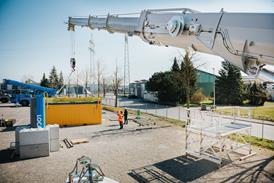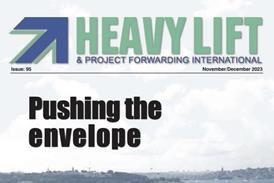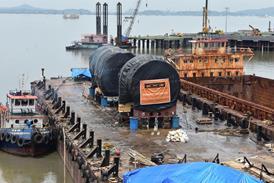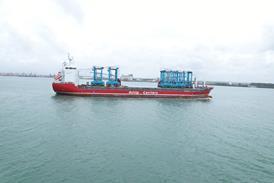February 10 - Drewry's latest report on the dry bulk shipping market could be good news for those owning and operating multipurpose and heavy lift ships.
In the latest edition of its Dry Bulk Forecaster, the global shipping consultancy says that contraction in vessel supply and healthy demand growth means the dry bulk shipping market is expected to recover from 2017 onwards.
If that proves to be correct it may provide a respite for those lines in the multipurpose sector that have seen their cargo market increasingly targeted by operators of dry bulk, ro-ro and container ships over the last few years.
Drewry predicts that demand is projected to grow at a healthy pace of 3 percent while supply is expected to grow by about 1 percent this year, "making the dry bulk segment an interesting market to invest in".
In the report, Drewry states that the growth in demand originates from a rise in iron ore and thermal coal trade. Coal demand is expected to rise mainly from developing Asian countries including Vietnam, South Korea, Taiwan and China. The rise in Chinese domestic steel consumption will provide employment to VLOCs and Capesize vessels carrying iron ore in the market. On the other hand, Vale's new project S11D has become the most cost effective iron ore mining project and will increase iron ore supply from Brazil increasing total tonne miles; this will help demand for bigger vessels in the long term.
It adds that the supply side is projected to grow by just 1 percent from 2017 because of high scrapping and a thin orderbook. The environmental regulations on Ballast Water Treatment System (BWTS) will become effective in September 2017 and IMO's regulation on use of low sulphur fuel oil in 2020 which will result in high scrapping of old tonnages.
Shipowners will prefer to scrap their old tonnage, with low earnings potential, than incur additional cost on scrubber and Ballast Water Treatment Systems. On the other hand, a contracting orderbook and low future new orderings due to limited financing availability are keeping a check on future deliveries. At this point in time, the orderbook as a percentage of the total fleet, which is a strong indicator of future deliveries currently stands at a decade low.
"The outlook for the dry bulk shipping market continues to be positive as the supply and demand gap continues to narrow. Charter rates are expected to improve for most of the dry bulk segments in 2017 with the steepest recovery expected in Capesize segment. Average charter rates are expected to rise from USD8,000 per day in 2016 to USD12,800 per day level in 2017 and will further improve from 2018," commented Rahul Sharan, Drewry's lead analyst for dry bulk shipping.
















